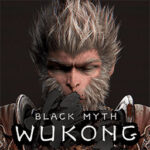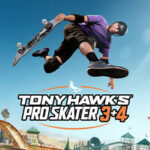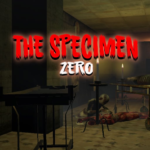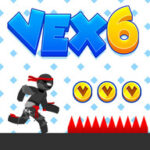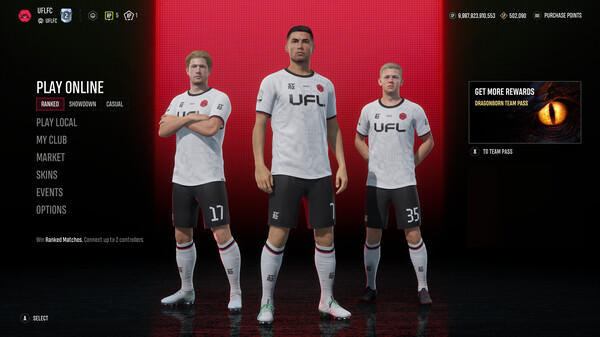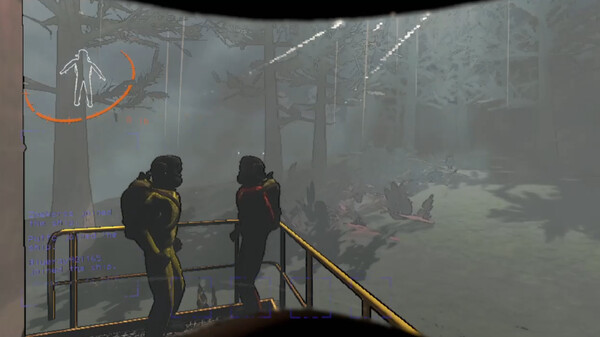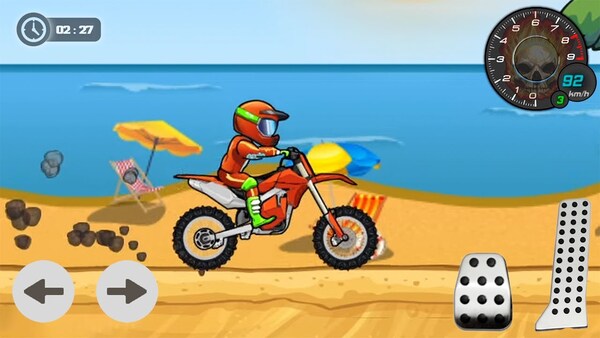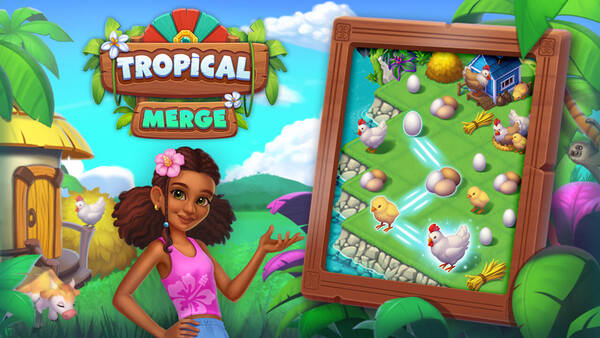Gorilla Tag – Swinging into VR’s Most Energetic Tag Experience
Introduction: The Rise of Gorilla Tag as a VR Sensation
In the burgeoning world of virtual reality, Gorilla Tag has emerged as one of the most dynamic and physically engaging social experiences. What began as a simple concept—players control gorillas using arm-swing locomotion to tag or evade one another—has evolved into a full-fledged phenomenon. Its intuitive controls, high-energy gameplay, and strong community have made it a staple in VR arcades and home setups alike.
This article dives deep into Gorilla Tag, exploring its evolution, mechanics, community culture, obstacles, and future potential. We’ll cover everything from the first swing to advanced tactics, social dynamics, performance trade‑offs, and our expert rating. Whether you’re a gorilla rookie or a seasoned swinger, this exhaustive breakdown offers insight, strategy, and context for VR’s most unique tag experience.
1. Origins: How Gorilla Tag Began and What Makes It Unique
When Gorilla Tag launched in early access in mid‑2021, it immediately stood out. Rather than relying on teleportation or thumbstick locomotion, the game mapped arm swings to gorilla movement—simulating the thrill of swinging through trees or climbing obstacles.
The Drive for Physicality
Its creator, “Another Axiom,” aimed to create a VR experience that encourages movement, physical fitness, and full‑body immersion. The game’s early popularity was fueled by its workout‑like engagement—arms, shoulders, and core get their own workout without any intention of hitting the gym.
Simplicity and Accessibility
There are no avatars with customizable gear or progress systems. Instead, players choose a cap or bandana and jump right into a world of gymnasium arenas, caves, and forest maps. The simple premise—tag, chase, evade—combined with button‑less motion made the game accessible to new and veteran VR users alike.
2. Getting Started: First Impressions and Controls
New players launching Gorilla Tag for the first time often report excitement mixed with mild confusion.
VR Environment Setup
To play, you need a headset supporting VR tracking (Oculus/Meta, Vive, Valve, etc.). Once in-game, you calibrate for height and start in a tutorial space that introduces grabbing, swinging, climbing, and tagging mechanics.
Locomotion Mechanics Explained
Movement is driven by pumping your arms. By pushing down with your real arms and transferring weight with your virtual body, your gorilla moves forward. Climbing walls requires grabbing with both hands and swinging your body—like rock climbing with gorilla arms.
Pros:
-
Highly immersive and physically engaging
-
Hands-on learning curve that’s intuitive once you master it
Cons:
-
For first-timers, movements can feel awkward or exhausting
-
Requires good physical space and can be tiring for longer sessions
3. Gameplay Modes and Maps Over Time
At launch, the game offered only a basic tag free-for-all mode, but successive updates added variety.
Freeze Tag and Infection
Freeze Tag sees players freeze when tagged and rely on teammates to unfreeze them. Infection mode starts with one “infected” gorilla whose tags convert others into infected. Both modes rely on team-orientated play and replayability.
Map Variety
Maps include Forest, Mines, Gymnasium, and Cave—each with different vertical challenges. Later updates added the Village map, which features rooftops and fences, increasing the importance of precise climbing and parkour.
List: Current Official Maps
-
Forest: Tall trees and platforms
-
Mines: Dark tunnels and mine cart brand
-
Gymnasium: Room‑scale open area with obstacles
-
Cave: Limited visibility, climbing-heavy
-
Village: High ledges, rooftops, initiative climbs
4. Community Culture: From Friendlies to Competitive
One reason Gorilla Tag excels is its vibrant and welcoming community.
Friendlies – Organized Play Sessions
Players organize “friendlies,” group sessions where new and veteran players mix in fun challenges or custom games. Community Discord servers and in-game lobbies ensure these happen worldwide every hour.
Tournaments and Competitive Play
While lacking formal leaderboards, the community hosts time‑trial competitions or tag‑speed challenges. Early adoption by VRExpo brought televised friendly tournaments, turning this playful game into a spectacle.
Pros:
-
Strong social inclusion and support for new players
-
Competitive options exist without requiring official structure
Cons:
-
No built‑in leaderboards or ranked mode, limiting recognition
-
Some lobbies overrun by experienced swingers—hard to join casually
5. Skill Progression: From Newbie to Pro Gorilla
The learning curve increases as players hone their swinging technique.
Movement Mastery
New players start by walking around with inefficient small swings. Pros loop their arms fast, transfer body weight fluidly, and chain movements—really mimicking a gorilla's momentum.
Advanced Tricks and Maneuvers
Techniques like bunny hops, stairs climbing, wall runs, and inertia flips exist. Learning tricks separates casual swingers from speedrunners or trick elite—some even create obstacle courses for their own use.
Pros:
-
Growth is tangible—physical improvement equals better in-game ability
-
Online guides and community videos help with skill development
Cons:
-
Physical fatigue can discourage attempts at advanced moves
-
Risk of frustration for players mentally sharp but physically challenged
6. Technical Performance, Comfort, and Physical Demand
Physicality is both the charm and potential obstacle of Gorilla Tag.
Performance Basics
The game is optimized for flawless 90 Hz tracking. It runs well even on modest PCs and standalone headsets thanks to simple low-polygon gorillas and environments. This performance ensures smooth gameplay even during intense movement.
Comfort Considerations
VR motion can induce fatigue or mild motion sickness in some. The game mitigates discomfort by letting players set rest-per-second timers and using stable locomotion references. Wear your full VR strap and take breaks.
Pros:
-
Smooth, lightweight performance encourages longer sessions
-
Comfortable for most users—no jarring visuals or motion artifacts
Cons:
-
Intense movement can lead to exhaustion
-
Some neck or shoulder strain reported by strenuous swingers
7. Social and Safety Features
As a multiplayer game, community safety and moderation are essential.
Voice and Text Communication
Game offers push-to-talk proximity voice chat and text messages. Community lobbies can enable friendly banter or serious team coordination. Parental controls are supported; VR headset safety protocols like guardian bounds protect real-world space.
Moderation and Reporting
Built-in reporting tools flag inappropriate behavior. Developers maintain a Discord server with moderators overseeing tournaments and friendlies. But as with any social VR game, community vigilance is essential.
Pros:
-
Proximity chat fits the immersive context—gorillas yell, hiss, laugh
-
Robust controls for safer play
Cons:
-
Some reports of toxic chat in unmoderated spaces
-
Voice alone isn't enough to prevent conflicts or griefing
8. Developer Support and Community Contribution
From episodic releases to ongoing community improvement, the game evolves with its players.
Regular Updates
Since launch, updates added new maps, custom lobbies, HUD improvements, bug fixes, and social features like friend lists and custom hats. The developer is transparent on Discord and social media, sharing future roadmap details.
Player‑Created Content
The official modding SDK lets players craft custom maps and game modes. One popular mod turns Gorilla Tag into obstacle‑course races or hide-and-seek variants. The game now features a built‑in mod browser.
Pros:
-
Frequent updates keep the gameplay fresh
-
Modding ecosystem encourages creativity and longevity
Cons:
-
Mod quality varies—some are buggy or abandoned
-
Risk of fragmentation between official and modded lobbies
9. Pros, Cons, and the Gorilla Tag Experience
Here we summarize what works and what can limit enjoyment in this energetic VR tag sensation.
Pros Summary
-
Immersive Locomotion: Arm-swing controls create a unique fitness/VR hybrid
-
Community Energy: Friendships, competition, mods—all drive engagement
-
Performance: Lightweight engine ideal for VR hardware
-
Content Growth: Ongoing dev support and vibrant mod scene
Cons Summary
-
Physical Demands: Not ideal for casual or physically limited users
-
Lack of Official Competitive Mode: Recognition reliant on community tournaments
-
Moderation Gaps: Social friction in unhosted lobbies
-
Content Fragmentation: Mods can splinter player base and cause mismatches
10. Expert Rating and Final Verdict
After thorough analysis, here’s how Gorilla Tag fares across key criteria:
| Category | Score (out of 10) |
|---|---|
| Immersion & Locomotion | 9.5 |
| Physical Fitness Value | 9.0 |
| Social Engagement | 8.8 |
| Technical Performance | 9.3 |
| Content Variety | 8.2 |
| Overall Experience | 9.0 |
Overall, Gorilla Tag delivers a gaming experience that feels revolutionary for VR. Its simple yet physically engaging movement system stands apart from typical VR locomotion methods, turning gameplay into real exercise. The community is active and collaborative, while developer support and user creativity promise long-term enjoyment.
Conclusion: Swing Into the VR Jungle
Gorilla Tag isn't just another VR title—it's a cultural phenomenon that blends athleticism, strategy, and social connection. From sprinting across rooftops to mastering a flawless climbing sequence, every session brings its own achievements and joy. While its physical demands may not suit every player, for those seeking immersive, active VR, it's a must-try.
Whether you're here to casually tag friends or pursue speedrunning all maps, Gorilla Tag offers something uniquely magical. Strap on your VR gear, warm up your arms, and prepare for a wild climb: the gorilla jungle awaits.





